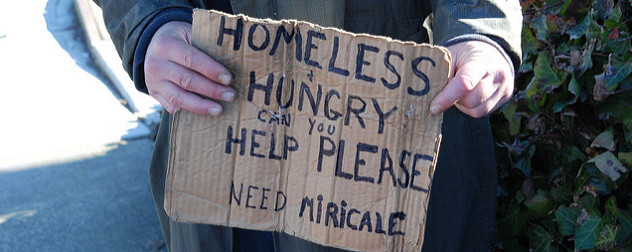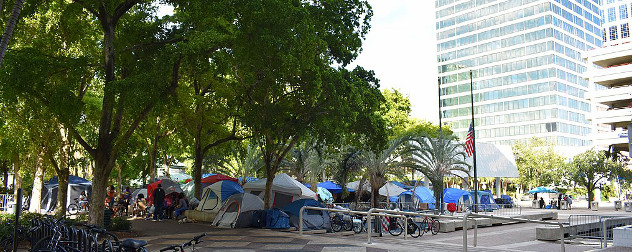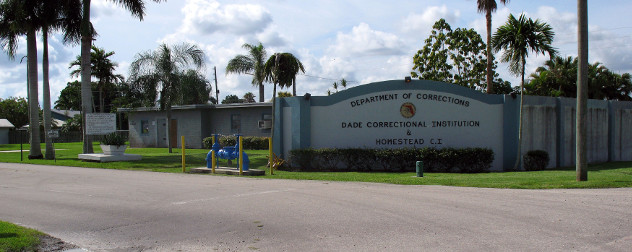I’ve always assumed that the large number of homeless people we see in Florida, especially in the winter, arrive because it is winter and Florida is an obvious destination.
On the other hand, maybe I just notice them because I happen to live in Florida.
Either way, homelessness is a huge problem, both in Florida and nationwide. While The Wall Street Journal reported last year that the number of homeless people declined overall between 2010 and 2015, in many cities it spiked sharply. Even when adjusted to reflect differences in overall population size, New York City, Los Angeles and Seattle all still have major populations of homeless residents. Two metro areas in Florida also made the list of cities with significant homeless populations sorted by homeless people per 100,000 residents: Pinellas County, which includes St. Petersburg and Clearwater, and Broward County, which includes my home city of Fort Lauderdale.
Significant homelessness in an area can cause major tensions between government officials who say they are trying to help and advocates who accuse them of trying to sweep the problem out of sight rather than actually solve it. The Miami Downtown Development Authority and the Miami-Dade County Homeless Trust sparred in 2015 over the DDA’s plan to provide mats at an overcrowded shelter. And a Fort Lauderdale man repeatedly clashed with law enforcement in 2014 over the city’s ordinance restricting feeding the homeless in public places.
In Daytona Beach, the problem has become acute over the past six months or so. Silent solicitation with signs has become pervasive, sometimes with panhandlers occupying all four of a traffic intersection’s corners. This spike in solicitation arrived after a city attorney advised police officers to handle such cases with care in light of a 2015 Supreme Court case from Arizona, which prioritized the First Amendment rights of individuals soliciting money from passers-by. Yet in trying to follow the Supreme Court’s guidance, beachfront Daytona has found itself now flooded – no pun intended – with panhandlers. Many are putting themselves and drivers at risk.
It has been 30 years since Congress passed the McKinney-Vento Homelessness Act, the first significant federal legislation responding to the national homelessness problem. In the decades since, we have still not gotten our arms around it. Sometimes conditions are better or worse in certain places, depending on economic cycles or local housing markets. But the underlying problem persists.
One of the root causes of the problem seems to be the deinstitutionalization movement that happened in this country over 40 years ago. Long-stay psychiatric hospitals were largely replaced, at least in theory, with community mental health services. The idea was that moving patients to less restrictive settings would safeguard their civil liberties and improve their quality of life. While that drive did a lot of good for many people with developmental disabilities or milder forms of mental illness, it left severely troubled people with nowhere to go if they did not have loved ones willing and able to take on their care. The group homes that were supposed to serve them mostly do not exist today because, in many cases, neighborhoods don’t want them. Extended inpatient psychiatric care of any sort is very rare, even for people who seek it. And involuntary commitment, beyond brief periods, is seldom an option at all.
So now the facilities for those with severe psychiatric disabilities, many of whom also have substance abuse issues, are effectively the streets – and jails.
Even the financial savings that were supposed to come from deinstitutionalization are, in all likelihood, illusory. But this is not fundamentally a matter of money. Some people are simply in no physical or mental condition to take care of themselves. Forcing them to struggle to do so in the open degrades these individuals, as well as their communities.
This is not to downplay to reality that the homelessness problem is complex. Collateral legal consequences can make it hard for those convicted of crimes to secure work or housing after they have served their sentences. Those who have lived on the streets for longer periods sometimes find the cycle becomes self-perpetuating. And a subset of malingerers chooses to live on the margins of society, imposing the cost of its maintenance on the rest of us.
There will be no solving our homelessness problem, however, until we recognize that some people are fundamentally incapable of housing themselves, and that these people need to be housed somewhere – either in conventional housing with public assistance if they can handle it, or in institutional settings if that is what their situations demand. Until we face this fact, floods of homeless people will continue to show up on our streets, no matter how far away they are from the beach.















December 6, 2017 - 2:18 am
The best approach to an issue many appear not to understand. I’ve been mentioning the institutionalizations as a significant help to the problem to see faces looking the other way.
There is a lot of courage needed to say the true root causes of problem that will not go away unless radical amendments are made to current system.
There are many spokes sustaining this far unbrokable wheel.